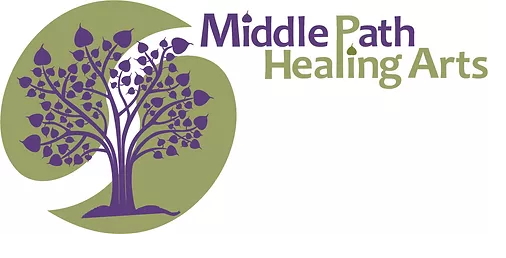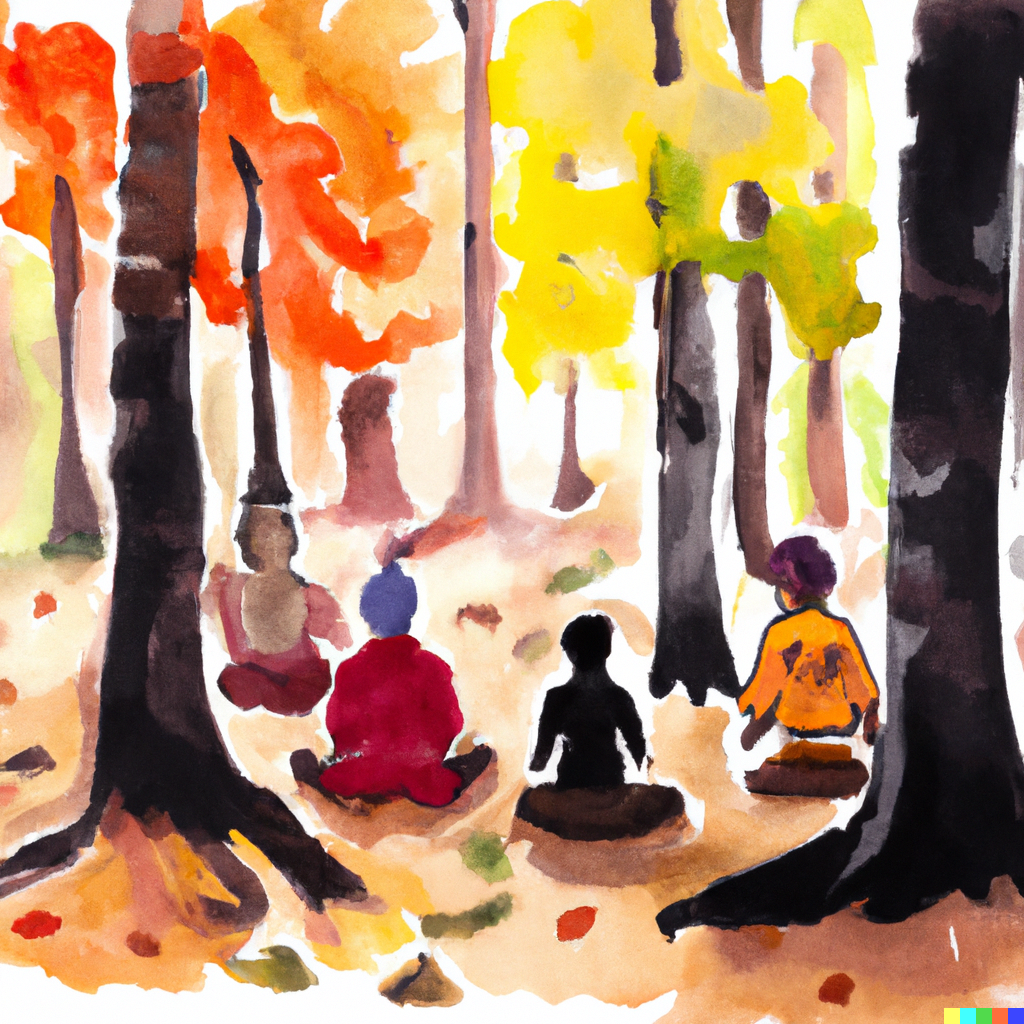In a world increasingly defined by the noise and rapid pace of mainstream culture, a growing number of people are choosing to forge their own paths and embrace simpler, more ethical lifestyles that diverge from societal norms.
I call this contemporary wayfaring, and consider it a testament to the human aspiration for authenticity, self-discovery, kindness, and a sense of belonging that transcends traditional boundaries. This post explores the concept of contemporary wayfaring and its similarities to monastic traditions (particularly within Buddhism but not at all limited to it) and highlights how ancient wisdom can guide us in modern expressions of opting out of and/or inhabiting mainstream culture differently than expected.
Let’s start with a beautiful quote from one of my favorite living American poets, Naomi Shihab Nye, that perhaps expresses the attitude underlying much contemporary wayfaring:
Walk around feeling like a leaf.
Know you could tumble any second.
Then decide what to do with your time.– from The Art of Disappearing
Defining Contemporary Wayfaring
Contemporary wayfaring can be understood as a conscious rejection of the societal pressures and expectations that characterize mainstream culture. It is a deliberate choice to disengage from the relentless pursuits of materialism, conformity, achieving fame and wealth, and the constant need for external validation.
Wayfarers seek to rediscover essential human values and purposes, crafting lifestyles that align with their innermost conscience and concern for the welfare of all. For me, Middle Path Healing Arts is an expression of living this way. If this idea speaks to you as well, some elements and expressions of contemporary wayfaring are offered here to help you connect with and find your own way into the possibility:
Mindfulness and Presence
As signaled by the quote above, it seems to me that contemporary wayfarers typically value awareness enough to listen to the inner voices that prompt us to choose. Mindfulness is a means to cultivate a deeper connection with ourselves and the world around us, yes, and it also opens us to an inner ethical compass that, when clearly recognized, calls for living in non-destructive ways. By living in the present moment, not only can we appreciate the beauty in everyday experiences, we can find a sense of grounding amidst the chaos of modern life and make choices that express our care for life.
Non-Attachment and Minimalism
At the core of Buddhist philosophy lies the principle of non-attachment, which encourages practitioners to detach themselves from material possessions and desires. Similarly, many contemporary wayfarers embrace minimalism, consciously choosing to let go of excessive belongings and consumerist tendencies. By simplifying their lives, both Buddhists and modern wayfarers find freedom and contentment in focusing on what truly matters – experiences, relationships, and personal growth. A personal friend of mine who embodies homelessness as an expression of wayfaring is Tahn Pamutto.
Contemplation and Reflection
Monastic traditions, including within the many traditions of Buddhism, encourage practitioners to embark on journeys of self-discovery and inner transformation through meditation, contemplation or prayer, valuing solitude and contemplation as a means of introspection and self-reflection. Similarly, contemporary wayfarers embrace moments of solitude, allowing themselves space for contemplation, self-reflection, and personal growth. Through practices like meditation, journaling, or disconnecting from technology, they cultivate a deeper understanding of themselves and their place in the world. Similarly, contemporary wayfarers consciously explore their own hearts, their relationships with others and their purposes on the planet. One time-honored and powerful way of doing this is through silent retreat, which is common in the more contemplative schools of many wisdoms but now embraced by many agnostic and science focused wayfarers too.
Minimalism and Sustainable Living
Another expression of contemporary wayfaring is the adoption of minimalist lifestyles and sustainable practices. Wayfarers tend to question the relentless consumerism that characterizes mainstream culture and instead prioritize experiences over material possessions. By simplifying our lives and reducing our impacts on the natural environment, we aim to live in greater harmony with all life on the planet, while finding contentment in the essentials. Consider: Aloka Vihara’s Earth Room, the powerful work of Joanna Macy.
Entrepreneurship and Digital Nomadism
Contemporary wayfaring often intersects with entrepreneurship and the emergence of digital nomadism. Many wayfarers embrace the freedom and flexibility offered by the digital era, leveraging technology to build online businesses and work remotely. This lifestyle allows us to escape the confines of traditional office spaces, enabling a sense of autonomy, creativity, and location independence. That said, there are challenges here, as the digital world has been built on the mainstream drive for material success and largely driven by socially sanctioned greed. Finding ways to inhabit the digital space that feel well-aligned with wayfaring can be time consuming. Here are a few key thinkers to check out on this topic: Charles Eisenstein, E. F. Schumacher.
Community and Collective Growth
Monastic traditions often emphasize the importance of communal living and support for personal and collective growth. Contemporary wayfarers, too, recognize the significance of alternative communities and subcultures in their journey. Whether in intentional communities or digital nomad networks, finding solace and inspiration in like-minded companions who provide support, shared experiences, and a sense of belonging. One of the wonderful signs that we humans are in fact growing, it seems to me, is that more and more such communities do not require participants to believe in something specific. More and more, the encouragement is to discover the way for by exploring various practices, like mindfulness and mindful movement. Consider Black Girls Breathing and the Free Mindfulness Project.
Traveling as a Means of Exploration
Another prominent aspect of contemporary wayfaring is the pursuit of travel as a transformative experience. Many wayfarers intentionally embark on journeys to unfamiliar places, seeking a broader perspective on life. Some are forced into homelessness by massive social or climactic factors and embrace their situations, turning the obstacle of limited means into the path of a contemporary nomadic lifestyle on the road. This resonates with the spirit of exploration and pilgrimage found in many monastic traditions, where seekers venture out in search of wisdom and enlightenment. Monks in the Thai Forest Tradition undertake long walks called tudong.
A Middle Path for Modern Times
In short, contemporary wayfaring represents a shift in perspective, an intentional reframing of ones relationship with mainstream culture in search of something deeper and more meaningful. It comes in many shapes and is a testament to the essentail goodness of the human spirit. It doesn’t require beleiving in a specific set of ideas, but calls us to walk our own path as wakefully as we can.
By drawing inspiration from monastic traditions, particularly within Buddhist philosophy, perhaps this post can help you, contemporary wayfarer, to navigate your journey with a sense of purpose, wisdom, and a deep connection to innermost heart and the world around you. Whatever shape its expression in your life takes, and whether it is inspired by ancient teachings, despair for the modern scene or a simple yearning for a more authentic and intentional life, contemporary wayfaring can be a transformative journey of personal growth and realization.

